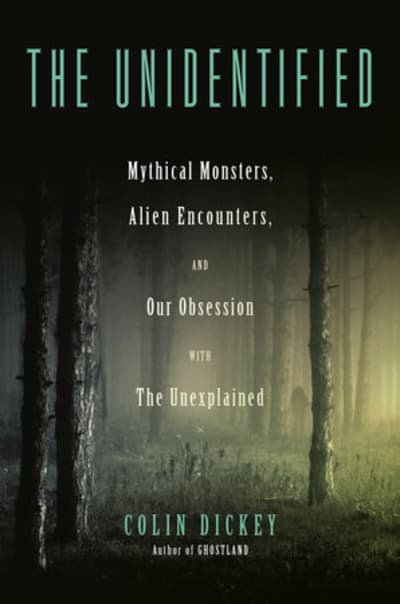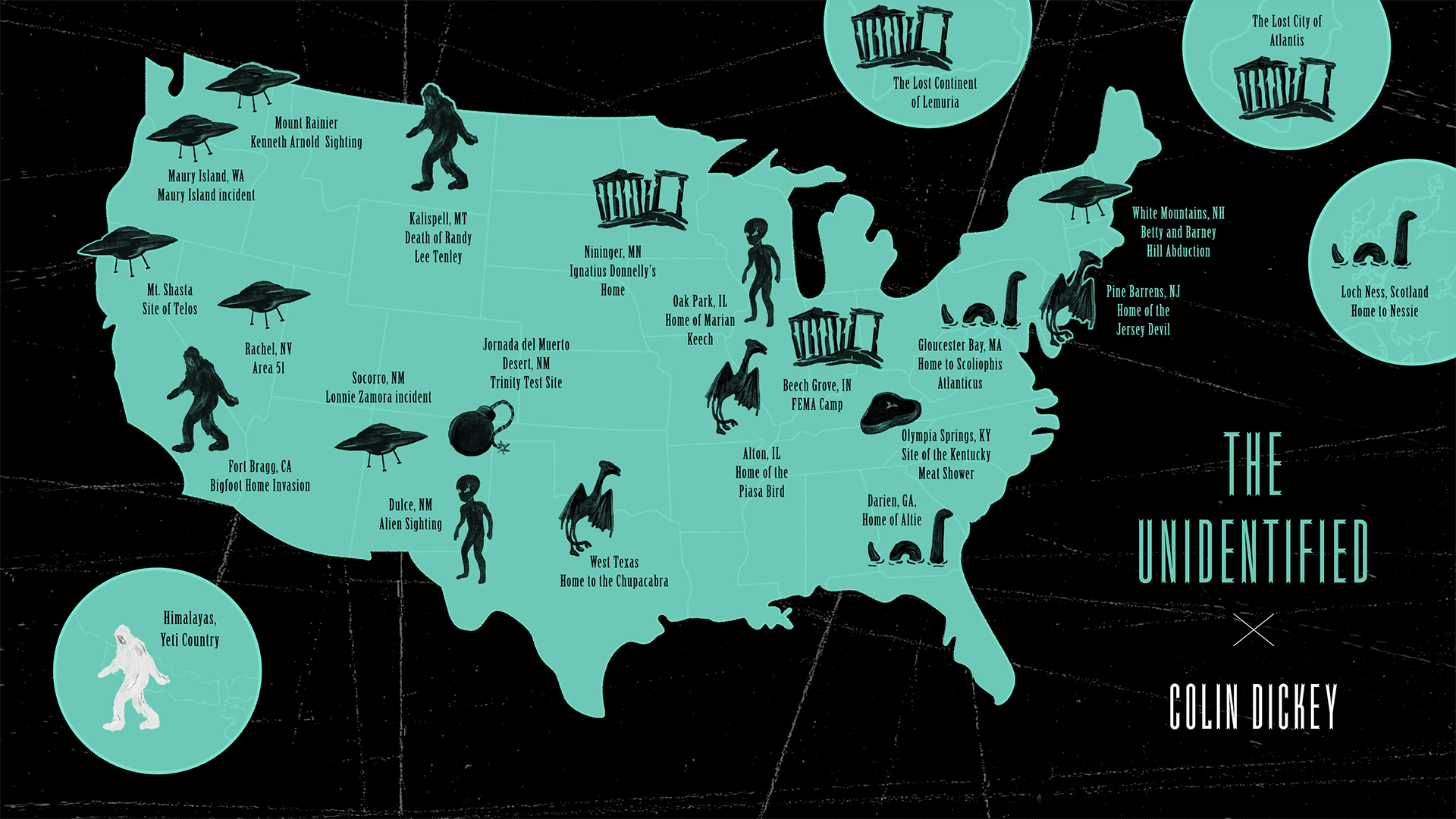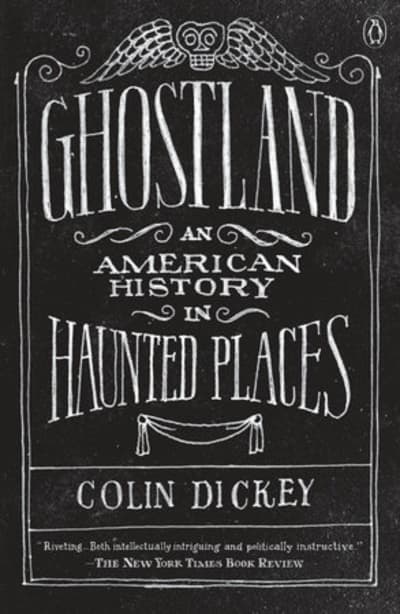Pre-order Now

Under the Eye of Power
The United States was born in paranoia. From the American Revolution (thought by some to be a conspiracy organized by the French) to the Salem witch trials to the Satanic Panic, the Illuminati, and QAnon, one of the most enduring narratives that defines the United States is simply this: secret groups are conspiring to pervert the will of the people and the rule of law. We’d like to assume these panics exist only at the fringes of society, or are unique features of the internet age. But history tells us, in fact, that they are woven into the fabric of American democracy.
Cultural historian Colin Dickey has built a career studying how our most irrational beliefs reach the mainstream, why, and what they tell us about ourselves. In Under the Eye of Power, Dickey charts the history of America through its paranoias and fears of secret societies, while seeking to explain why so many people—including some of the most powerful people in the country—continue to subscribe to these conspiracy theories. Paradoxically, he finds, belief in the fantastical and conspiratorial can be more soothing than what we fear the most: the chaos and randomness of history, the rising and falling of fortunes in America, and the messiness of democracy. Only in seeing the cycle of this history, Dickey says, can we break it.
Buy Now

The Unidentified
"Absolutely perfect for the current moment." —Buzzfeed
America's favorite cultural historian and author of Ghostland takes a tour of the country's most persistent "unexplained" phenomena
In a world where rational, scientific explanations are more available than ever, belief in the unprovable and irrational--in fringe--is on the rise: from Atlantis to aliens, from Flat Earth to the Loch Ness monster, the list goes on. It seems the more our maps of the known world get filled in, the more we crave mysterious locations full of strange creatures.
Enter Colin Dickey, Cultural Historian and Tour Guide of the Weird. With the same curiosity and insight that made Ghostland a hit with readers and critics, Colin looks at what all fringe beliefs have in common, explaining that today's Illuminati is yesterday's Flat Earth: the attempt to find meaning in a world stripped of wonder. Dickey visits the wacky sites of America's wildest fringe beliefs--from the famed Mount Shasta where the ancient race (or extra-terrestrials, or possibly both, depending on who you ask) called Lemurians are said to roam, to the museum containing the last remaining "evidence" of the great Kentucky Meat Shower--investigating how these theories come about, why they take hold, and why as Americans we keep inventing and re-inventing them decade after decade. The Unidentified is Colin Dickey at his best: curious, wry, brilliant in his analysis, yet eminently readable.


Ghostland
Colin Dickey
One of NPR’s Great Reads of 2016
“A lively assemblage and smart analysis of dozens of haunting stories…absorbing…[and] intellectually intriguing.” —The New York Times Book Review
An intellectual feast for fans of offbeat history that takes readers on a road trip through some of the country’s most infamously haunted places—and deep into the dark side of our history.
Colin Dickey is on the trail of America’s ghosts. Crammed into old houses and hotels, abandoned prisons and empty hospitals, the spirits that linger continue to capture our collective imagination, but why? His own fascination piqued by a house hunt in Los Angeles that revealed derelict foreclosures and “zombie homes,” Dickey embarks on a journey across the continental United States to decode and unpack the American history repressed in our most famous haunted places. Some have established reputations as “the most haunted mansion in America,” or “the most haunted prison”; others, like the haunted Indian burial grounds in West Virginia, evoke memories from the past our collective nation tries to forget.
With boundless curiosity, Dickey conjures the dead by focusing on questions of the living—how do we, the living, deal with stories about ghosts, and how do we inhabit and move through spaces that have been deemed, for whatever reason, haunted? Paying attention not only to the true facts behind a ghost story, but also to the ways in which changes to those facts are made—and why those changes are made—Dickey paints a version of American history left out of the textbooks, one of things left undone, crimes left unsolved.
Spellbinding, scary, and wickedly insightful, Ghostland discovers the past we’re most afraid to speak of aloud in the bright light of day is the same past that tends to linger in the ghost stories we whisper in the dark.
Other Writing
Subterranean Homesick Blues, Los Angeles Review of Books
Peak Adventure, LA Review of Books
A Faithful Hound, Lapham’s Quarterly Roundtable
The Dispossessed, LA Review of Books
Abyssal Alphabet, Reanimation Library, Word Processor
Pet Cemetery, The Revealer
The Redemption of Saint Anthony, Public Doman Review
The Addicted Life of Thomas De Quincey, Lapham’s Quarterly Roundtable
The Canny Valley: Social Memoir, Used Furniture Review
The Haunted Hotels of Los Angeles, Virginia Quarterly Review
Pitch Battles, The Believer; read the whole thing at Longform.org
A Fire in the Belly, Lapham’s Quarterly Roundtable
Dark Pages, The New Inquiry
One Book Opens Another, LA Review of Books
On the Trail of the Elusive Vampire Squid from Hell, LA Review of Books
The Canny Valley: The Self-Help Avant-Garde, Used Furniture Review
St. George, the Monstrous Saint, The Revealer
The Canny Valley: True Enough, Used Furniture Review
No Success Like Failure, LA Review of Books
King & I, LA Review of Books
Very Superstitious, Lapham’s Quarterly
About a Genre: John D’Agata and the Essay, LA Review of Books
Living in the Margins, Lapham’s Quarterly Roundtable
Dancing with Memory: On Brian Castro’s Shanghai Dancing, The Millions
The Patron Saint of Dark Days, Lapham’s Quarterly Roundtable
We Will Re-Bury You, LA Review of Books
Quack Prophet: Nostradamus, Lapham’s Quarterly, The Future (Fall 2011)
After Bloomsday: Thoughts on an All-Day Reading of Ulysses, Writers’ Houses
Dear S–, The Orphan
Skyscrapers of the Dead, Lapham’s Quarterly, Roundtable
Necropolis, Lapham’s Quarterly, The City (Fall 2010)
On Bones and Libraries, Lapham’s Quarterly, Roundtable
The Twice-Bought Head of Cardinal Mezzofanti, Wonders and Marvels
Seismograph, Phonautograph, Skull: On Useless Recordings, This Recording
The Cadaver Method, Lapham’s Quarterly, Roundtable
The Fate of His Bones, Cabinet Magazine, Issue 28 (Winter 2007/2008)
On Passports: W. G. Sebald and the Menace of Travel, Image & Narrative, Issue 19 (Fall 2007)
About the Author

Photo: © John Michael Kilbane
Colin Dickey is a writer, speaker, and academic, and has made a career out of collecting unusual objects and hidden histories all over the country. He's the author of multiple books, including Ghostland: An American History in Haunted Places, and The Unidentified: Mythical Monsters, Alien Encounters, and Our Obsession with the Unexplained. A regular contributor to the New Republic and Lapham's Quarterly, he is also the coeditor of The Morbid Anatomy Anthology. With a PhD in comparative literature from the University of Southern California, he is an associate professor of creative writing at National University.
